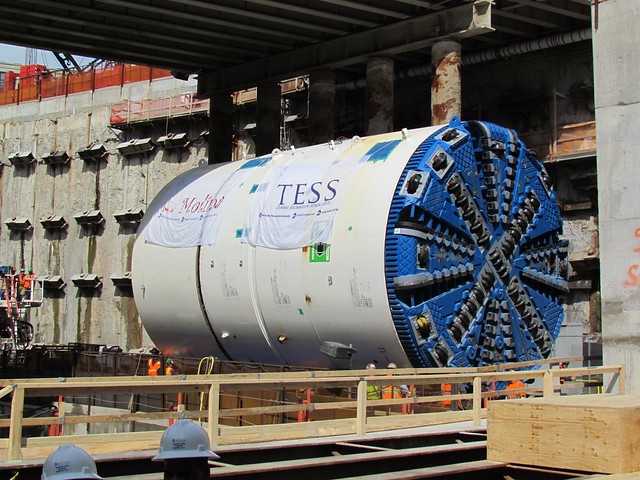 Two weeks ago, subway riders in Queens had the pleasure of experience the pitfalls of aging infrastructure. Heavy rainfalls and what the MTA termed a “preexisting water condition” damaged 800 feet of track in the Manhattan-bound Steinway Tube, and thus the 7 train could not operate into the city.
Two weeks ago, subway riders in Queens had the pleasure of experience the pitfalls of aging infrastructure. Heavy rainfalls and what the MTA termed a “preexisting water condition” damaged 800 feet of track in the Manhattan-bound Steinway Tube, and thus the 7 train could not operate into the city.
Transit sent maintenance employees to conduct the emergency signal repair work that Friday, and until midnight on Sunday, crews worked feverishly to restore this important artery into Midtown Manhattan. To complete the repairs, Transit installed new insulating materials between the rails and track ties. This work included new wiring, removing and replacing the track rails, realigning the third rail and grouting the tunnel wall to prevent future leaks.
“Thanks to the dedication and hard work of hundreds of our employees, we were able to resume service in time for Monday’s rush period,” Transit President Thomas F. Prendergast said in a statement last week. “We thank our customers for their patience while we worked to correct this problem. Our top priority is customer safety, and a fully functional and dependable signaling system is a key component to running trains safely through our system.”
Part of the reason why Transit officials were so keen to praise their repair crews concerned the confined quarters in the Steinway Tube. Daily News transit reporter Pete Donohue took a tour of the tight tube for his column this week. He writes from inside the tunnel:
Looking west, subway tracks stretch thousands of feet toward Grand Central, a hazy blur of light looming like a star in the midnight sky. To the east, the rails run through the Steinway Tunnel, which was built at the turn of the century for electric trolley cars that carried riders under the East River between Manhattan and Long Island City, Queens. There are 13 other underwater tunnels in the city’s 468-station maze. They’re all unique, but Steinway has a dubious distinction. “This one gives us the most headaches,” NYC Transit President Tom Prendergast said as he walked the Manhattan-bound tube at 1:30 a.m. Wednesday.
Trains had been halted between 1 a.m. and 5 a.m. so track workers could inspect rails and other equipment. In the pitch black up ahead, the workers were identifiable only by their muffled voices and the beams of their flashlights, which bobbed up and down with each step like buoys rising and falling on a bay.
On other stretches of track in the sprawling system, workers can do similar equipment inspections and maintenance in the time gaps between trains, tucking themselves into concrete niches or between iron columns when a train approaches and emerging when it passes.
That’s not possible in Steinway. The two cast-iron tubes – Manhattan-bound and Queens-bound – are narrow. Very narrow. The only way to avoid getting struck by an approaching train is to scramble up a high bench wall along the tracks. It’s too dangerous and impractical to pull that off repeatedly with regular train traffic. “We can’t have people working in here at all when the trains are moving,” Prendergast said. “We can’t respond to make repairs.”
Eventually, says the MTA, they’ll have to shut down the 7 for another overnight to give the tube a thorough cleaning. It could need it.
As this story unfolded, it highlighted the never-ending quest to reach a state of good repair and why that’s an important goal to attempt to attain. When aging infrastructure reaches a certain point, it cannot withstand the daily beating it takes. That’s what happened to the Steinway Tube ten days ago, and it will likely happen again to this 110-year-old tunnel. Without the money for preventative maintenance, renovations happen only after an emergency. That seems to be the way of things underground these days.







 (Rockaway Shuttle)
(Rockaway Shuttle)






